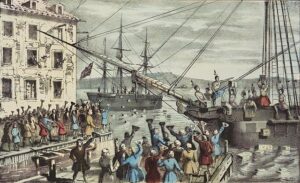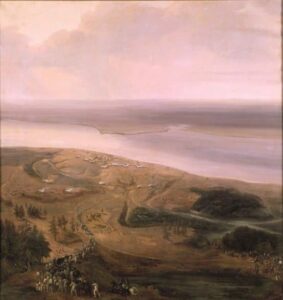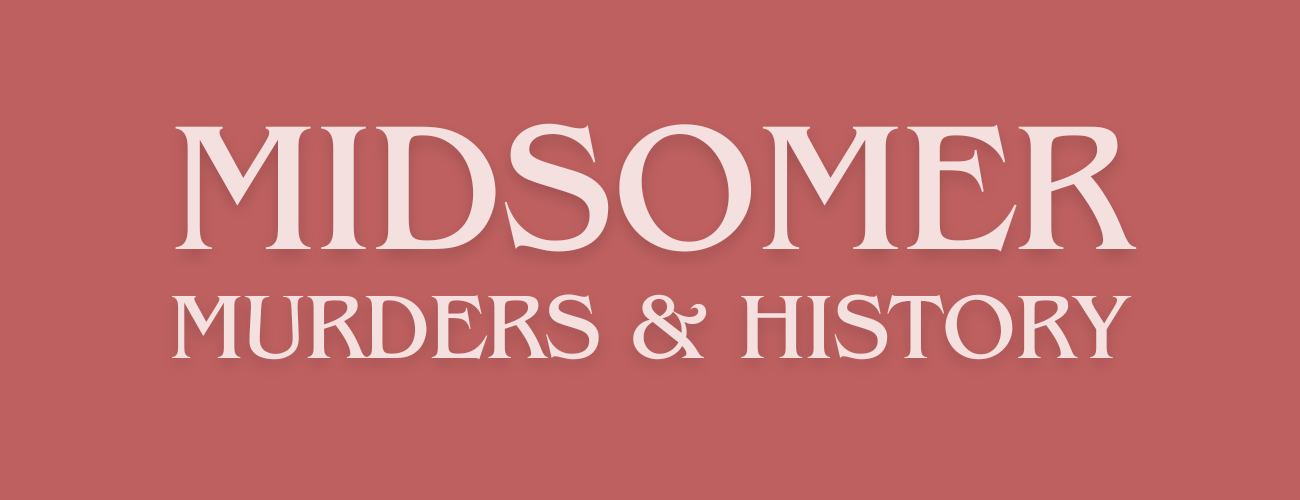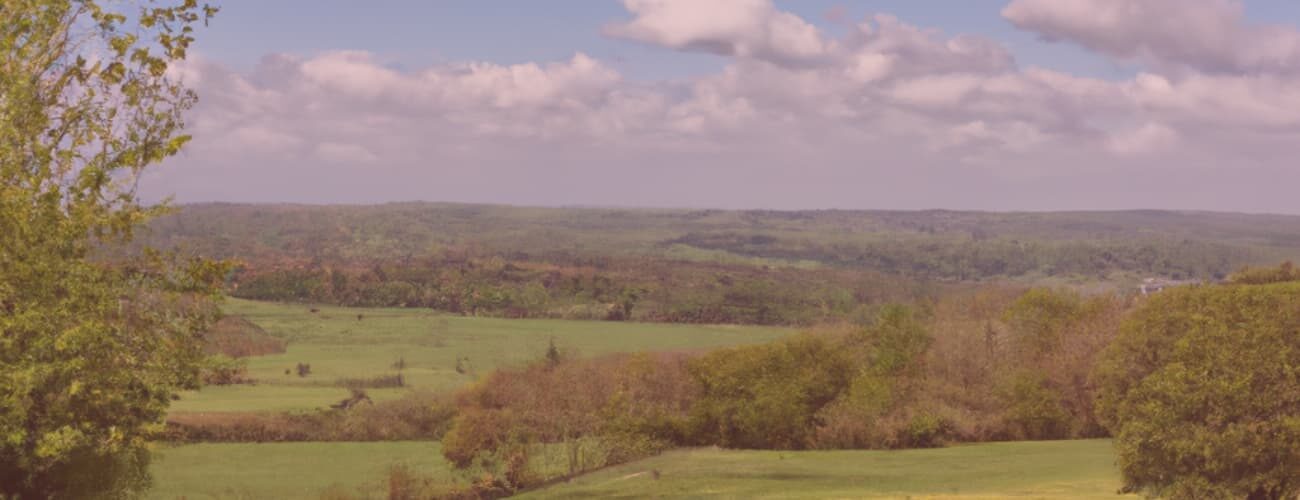•
(Caution: Contains spoilers for Episode: S08E04: Bantling Boy)
Diesen Beitrag gibt es auch auf Deutsch.
•
We enter Bantling Hall with Tom Barnaby and Angela Hartley, because among the large gentlemen in oil on canvas is Thomas Bantling. One of the men of whom the lady speaks only with contempt. He fought as an Englishman in the War of Independence, but not for his King, but for the colonies that later became the United States of America.
The other Hartleys, the Barons of Bantling, were similarly disloyal, as already mentioned: Cecil Hartley was part of Guy Fawkes’ network of conspirators in the Gunpowder Plot of 1605, and George Hartley was part of the Royal Army but betrayed it at the Battle of Marston Moor (the first and decisive victory for the Parliamentarians in the Civil War).
Well, in the end the revolutionaries of the thirteen British colonies were also Englishmen who betrayed the King, but I suspect that Thomas Bantling spent his life in England but was a collaborator.
By the time the English colonies in America had declared their independence, most Whigs believed that America’s complete independence should be accepted. In the eyes of Angela Hartley, he was one thing and one thing only: a traitor.
The beginning of the revolution

From the 17th century, an increasing number of British emigrated to the east coast of what would become the United States. They were mainly Puritans who wanted to start a new and better life as settlers.
A hundred years later, there were thirteen British colonies in America that wanted equal rights and autonomy from the English Parliament. Complete independence or a break with the English king was not their aim, but they did want their own currency, for example, to gain their own financial and economic sovereignty. This was prevented by the ban on minting coins, which had already been imposed on the colonies in 1704.
Well, we all know about the Boston Tea Party on 16 December 1773, which really got the ball rolling. On 9 February 1775, the British government declared Massachusetts – the “hotbed of disloyalty” – a breakaway province, but this only increased the desire for economic and political autonomy. And in the Kingdom of Great Britain, the idea of conquering the colonies by force was quite popular.
On 30 March, the British Parliament passed the New England Restraining Act to punish the most rebellious provinces.
When 700 British soldiers arrived in Lexington at 5am on 19 April 1775, crossing the Charles River and the muddy swamp, officers from both sides faced each other. The order was not to fire, on either the British or the colonial side. But then a shot was fired after all. In the ensuing battle, eight of the revolutionaries died and the American War of Independence had begun.
Anti-British support for the colonies
George Washington, now Commander-in-Chief, soon formed a Continental Army from the militia troops of the colonies, initially with 15,000 men – less than half the number who fought for the Kingdom of Great Britain. King George III bought some 30,000 troops from what was then Germany, most of them from the Landgraviate of Hesse-Kassel.
The two million or so rebellious settlers were passionate, but they had no army of their own, no money and no war material. Unlike Cromwell’s New Model Army in the English Civil War, passion alone was not the key to success.
And the colonies were no match for the British Empire in terms of tactics and manoeuvres. Nevertheless, they issued the Declaration of Independence in 1776 and formed the Confederation in 1777.
France, which had an interest in weakening Britain in America in order to establish some colonies there, initially supported the revolutionaries financially and with weapons. But what was lacking was military training and discipline. In the winter of 1777, when the Continental Army was short of food, money and clothing, France sent Friedrich von Steuben, a native of Prussia, to America. During the winter, he trained the men in drill, military discipline, more effective use of firearms, and marching and column formation. Steuben himself was appointed major general and inspector general of the army.
His training paid off within months, as the morale of the Continental Army was raised. At the same time, France was now actively involved in the War of Independence. Together, they turned the tide in favour of the revolutionary colonies. The British suffered increasingly from the fragmentation of their forces and supply problems, exacerbated by the entry into the war of France (1778), Spain (1779) and the Netherlands (1780).
The triumph of the colonies

The Continental Army was able to achieve great success by luring many troops into a trap far from their base. This was the case in 1781, when George Washington moved the army into Virginia, crossed the Hudson at the end of August, forced Sir Henry Clinton (the commander-in-chief of the British forces) to stay in New York with a feint, and moved himself across New Jersey, Pennsylvania and Maryland to Yorktown. There he also met 3,000 French troops that Admiral de Grasse had made available until October and who had already gained control of the Chesapeake Bay.
With French support, George Washington successfully besieged Yorktown and the troops there under General Lord Charles of Cornwallis. Cornwallis was a direct subordinate of Henry Clinton and had a history of disobedience. Whether his desire for an armistice on 19 October 1781 was part of this, I do not know.
But the consequences for Cornwallis, Clinton, the Kingdom of Great Britain and the Thirteen Colonies were drastic: American independence, for which at the time Henry Clinton was primarily responsible, but in today’s historiography it is Lord Cornwallis who is held more responsible.
Although the British wars with France and Spain for land in America continued for another two years, British forces in America were largely confined to a few ports and western forts, and fighting in North America largely ceased. On 30 November 1782, a preliminary peace was signed between the United States and the Kingdom of Great Britain. The Peace of Paris on 3 September 1783 finally ended the wars and the former British colonies became independent. Ratification took place on 12 May 1784.
Who was the real Thomas Bantling?
As mentioned above, we don’t know what role Thomas Bantling played in all this. However, the site of his home, Bantling Hall, is in Dorney, Buckinghamshire. The beautiful Tudor mansion, Dorney Court, has been on the National Heritage List since 23 September 1955 and stands on the site of a manor house that stood there before the Battle of Hastings. The Domesday Book mentions that it was first held by an Aldred and then, in 1086, by Miles Crispin, who leased it to a Ralf. It then passed through several families, but by the 17th century it was owned by the Palmer family, who still own it today. There is no reference to the Gunpowder Plot, the Battle of Marston Moor or the War of Independence. Just this: The Palmer family were royalists during the Civil War and their estates were confiscated in 1646, but returned in 1657.
In general, I have been unable to find any Buckinghamshire collaborators who fought for the Americans in the Revolutionary War. However, there was the 52nd Regiment of Foot from Buckinghamshire, a light infantry regiment of the British Army, which saw its first action in the American War of Independence. They were present at Lexington at the start of the war and only remained in America until 1778.
After that, the surviving soldiers were reassigned to other regiments and the officers returned to England. It is possible that Thomas Bantling travelled to the other continent as part of this regiment, but then switched sides.
The Secret of the Ring 2 and the synicate
Perhaps, now that little Peter has grown up, he will program a sequel to The Secret of the Ring computer game, but with all the historical men (the scallywags, according to Angela Hartley)? Perhaps with the addition of the characters around the syndicate and the Bantling Boy – and himself? Could be a Midsomer Murders bestseller. 😉
Read more about Midsomer Murders & History
The Chronology of Midsomer County by Year or by Episodes
Deep Dives into Midsomer & History
This is an independent, non-commercial project. I am not connected to Bentley Productions, ITV or the actors.

Literature
- Ferling, John: Almost A Miracle. The American Victory in the War of Independence. Oxford 2009.
- Guttridge, G. H.: The Whig Opposition in England during the American Revolution. In: The Journal of Modern History 6 (1934). P-1-13.
- Namier, Lewis. England in the Age of the American Independence. London/New York/Shanghai 2004.
- NN: Parishes: Dorney. In: William Page (Ed.): A History of the County of Buckingham. Volume 3. London 1925. P. 221-225.
- Stephen Conway, The British Isles and the War of American Independence. Oxford 2000.
First published on MidsomerMurdersHistory.org on 13 January 2024.
Updated on 6 July 2025.


7 thoughts on “A traitor from Midsomer in the American Independence War?”